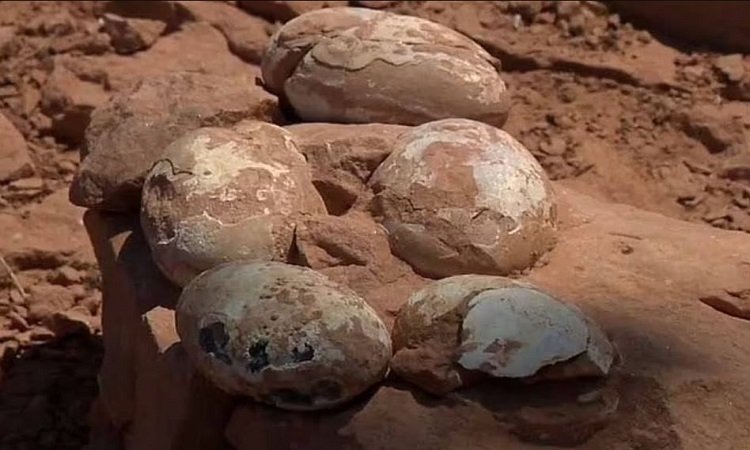Jurassic Park, here we come. Archeologists have discovered more than 100 dinosaur eggs, many with intact embryos, in the southern Patagonia region of Argentina in what they say is the oldest known evidence of a complex dinosaur herd.
Scientists also uncovered fossilized bones of 80 dinosaurs of all ages nearby, providing further evidence of a community of a Jurassic-era species called Mussaurus patagonicus, according to the research published last month in the British journal Scientific Reports.
The bones were segregated by age, with eggs in a common nesting ground. Juveniles likely were left in “schools” while adults foraged, according to the researchers.
“This may mean that the young were not following their parents in a small family structure,” said Jahandar Ramezani, a scientist at the Massachusetts Institute of Technology who participated in the research. “There’s a larger community structure, where adults shared and took part in raising the whole community.”
The “discoveries indicate the presence of social cohesion throughout life and age-segregation within a herd structure, in addition to colonial nesting behavior,” the article says. “These findings provide the earliest evidence of complex social behavior in Dinosauria.”
The two-legged adult herbivores had a long neck, grew to lengths of some 20 feet, and weighed about 1.5 tons. They walked the earth some 200 million years ago, and were functioning in herds 40 million years earlier than previously known.
Lead researcher Diego Pol, a paleontologist of the Edigio Feruglio Paleontological Museum in Trelew, Argentina, called the archeology site “one of a kind.” It’s a “pretty dramatic scene from 193 million years ago that was frozen in time,” he added.
The nesting ground includes “delicate and tiny dinosaur skeletons as well as eggs with embryos inside,” Pol told Reuters.
The “specimens we have found showed that herd behavior was present in long-necked dinosaurs since their early history,” Pol added. “These were social animals, and we think this may be an important factor to explain their success.”
When their luck ran out, the herd most likely died from a mass-death event like a drought, archeologists believe.
Another team of archeologists announced last month that they had extracted 30 titanosaur eggs from fossilized nests in a two-ton rock in northern Spain. There may be another 70 eggs still buried in nests deeper within the rock, which indicates a communal nesting site.
Titanosaurs were long-tailed four-legged herbivores with necks up to 66 feet long.







